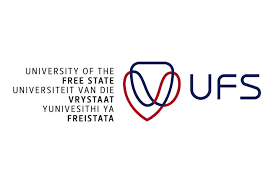University of the Free State: Expanded Collaboration for Cultural Heritage Preservation in Limpopo
“Our function nowadays is very much a society-focused one, where we concentrate on applying our skills and knowledge to make a real difference in the societies we serve and draw our students from.” This is how Prof Francis Petersen, Rector and Vice-Chancellor of the University of the Free State (UFS), recently reflected on the role of the UFS within the broader society. He added that it is imperative, however, to “join forces across a wide range of sectors and disciplines to find effective, lasting solutions”. And it is in this spirit that a partnership between the UFS and ZZ2, a South African farming enterprise and fresh produce company, is about to branch out into the arts.
From Agriculture to Culture
But how does a collaboration with a farming and fresh produce company lead to a world of mythical wooden figures, metal ‘scrapture’ beasts, and ancient folklore?
ZZ2 is the custodian of the culturally significant Jurgen Witt Collection, consisting of predominantly Tsonga, Venda, and Pedi art and artefacts from the eastern Limpopo area. With a formal partnership established, and with the commercial farming conglomerate stewarding the collection, a group of UFS academics asked themselves: How can we add academic value and insight to this important cultural heritage?
An Art Adventure
Subsequently, this group of academics – representing three different UFS faculties – recently set out on a fact-finding mission to Limpopo and down the Ribola Art Route. The group comprised of Veronica Dimakatso Masenya, Bontle Tau, Miné Kleynhans, Prof Katinka de Wet (from the Faculty of the Humanities), as well as Ketshepileone Matlhoko (Faculty of Natural and Agricultural Sciences), and Herkulaas Combrink (Faculty of Economic and Management Sciences). On their trip, they were not only introduced to the Jurgen Witt Collection, but also to the wealth of the Limpopo Heritage Collection.
“Encountering areas where our cultural heritage is valued and preserved reconnects us to our communality as people,” says Prof De Wet. “Our entire trip was characterised by rich encounters between different groups of people – from different nationalities, ethnic groups, professional backgrounds, and academic disciplines.”
Some of the artworks they viewed included an exhibition of fantastical figures – inspired by traditional Tsonga folk tales – by the late sculptor, Phillip Rikhotso (1945-2015). They also spent time with scrap metal artist, Pilato Bulala – who refers to his work as ‘scraptures’; Mafemani Thomas Kubayi – the man who listens to the wood and chisels its story from the grain; and Kenneth Nonyana – whose wooden characters reflect our most hidden truths and turmoil. The Tzaneen Museum, Baretta House, and Thomo Heritage Park – the brainchild of the visionary guide and historian Richard Mabunda – contributed to a deeper understanding of the art and culture of the region.
Adding Academic Value
After their return, the group realised that what they had seen and experienced would be too big to handle as one, overarching research project. “We therefore think it best to come up with small, manageable working projects that can be pursued,” Prof De Wet says.
Some of these smaller projects under consideration is the possibility of a translation project. During their visit, many traditional stories were shared, but many of these myths and folk tales are merely jotted down. Training could also be provided to assist those storing and preserving collections. There might also be room for providing support in cataloguing, archiving, and exhibiting collections, curating new shows, and possible art residencies.
We all need to feel a sense of belonging and attachment,” Prof De Wet remarks on the importance of this work. “Through endeavours such as cultural preservation and reflection on cultural evolutions and revolutions, we all feel and live that sense of belonging and attachment. And this happens not just as part of a specific group, but also as part of humankind as a whole.”

